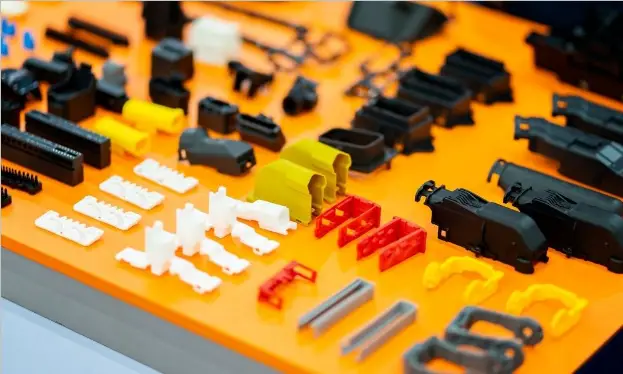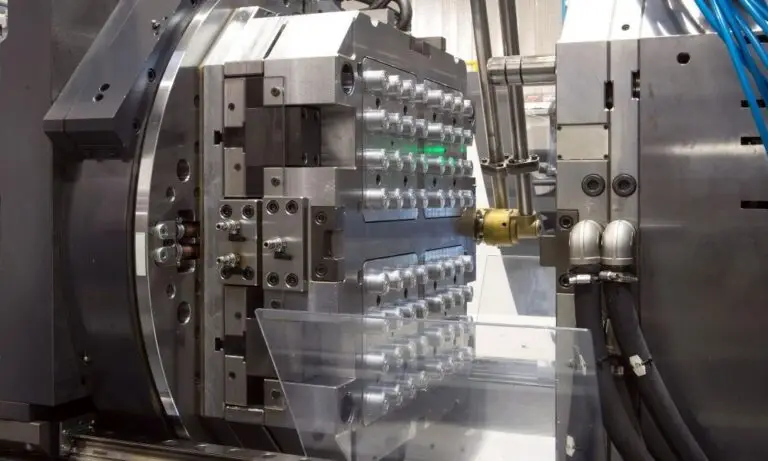Advantages and Disadvantages of Injection Molding
Reaction injection molding (RIM) has been used to create parts for a variety of different industries, ranging from complex medical devices to construction equipment. Experienced product designers understand that the manufacturing process selected greatly affects the final product’s cost, appearance, and quality. Therefore, it’s essential to weigh the pros and cons of each potential manufacturing method. By doing this, you can identify the most appropriate process for your project’s unique requirements, including when to use rejection injection over alternative methods. Below, we highlight the notable advantages and disadvantages of reaction injection molding to enhance your decision-making process.
THE TOP ADVANTAGES OF REACTION INJECTION MOLDING
Lower Molding Temperatures and Pressures
One of reaction injection molding’s main advantages, when contrasted with other manufacturing methods like injection molding, is RIM molding’s ability to operate at considerably lower temperatures and pressures. This efficiency primarily stems from the low viscosity liquids utilized in the RIM process. The blend of polyol and isocyanate creates a liquid akin to motor oil in consistency, enabling the mixture to fill even the most intricate mold designs effortlessly. Consequently, there’s no need for high temperatures or pressures to shape and solidify the plastic.
LOW TOOLING COSTS
One major benefit of reaction injection molding is its low tooling costs. As stated above, the RIM process operates at relatively low temperatures and pressures, allowing the use of aluminum-made tools instead of more robust materials, such as steel. Compared to steel tooling, aluminum tools are not only more affordable to produce but also simpler to modify. Thus, the tooling costs of reaction injection molding are typically much lower than those of other molding processes.
ABILITY TO ENCAPSULATE ITEMS
Another advantage of reaction injection molding is its ability to mold items into parts while preserving their functionality. The RIM process’s lower pressures and temperatures enable the encapsulation of various components, including antennas, circuit boards, magnets, batteries, metal rods, and threaded inserts.
Encapsulation can be utilized for a range of products due to its numerous benefits, such as enhanced protection for more fragile parts, theft prevention, and reduced parting lines. Therefore, the option to encapsulate components within a part is highly desirable for multiple applications.
THE ECONOMICAL PRODUCTION OF LARGER PARTS
Reaction injection molding is particularly suitable for producing larger parts. Given that RIM tooling necessitates only inexpensive aluminum, it allows manufacturers to construct larger molds without incurring prohibitively high large costs. The steel tooling required for creating large parts via traditional plastic injection molding typically costs several hundred thousand dollars or more. Hence, RIM proves to be a much more cost-effective method for producing larger parts, especially in lower production volumes.
COMPLEX PART GEOMETRIES
Beyond the production of larger parts, RIM is also well-suited for designing and constructing parts with complex geometries like in the production of medical devices. Reaction injection molding differentiates itself through the high degree of design freedom it offers. For example, RIM can produce parts with differing wall thicknesses, curves, and encapsulated components, among other sought-after features.
The low viscosity of RIM materials, which enables them to fill even the most complex molds, coupled with the lower tooling costs that creation of intricate molds economically viable, allows RIM manufacturers to efficiently design and build highly detailed parts in a cost-effective manner. Consequently, RIM is frequently called upon to produce parts for medical devices and laboratory equipment. Reaction injection molding offers high precision and customization capabilities, which are essential for producing complex, durable medical devices that meet stringent regulatory and safety standards.
FEWER PARTING LINES
The ability to reduce the number of parting lines on a part is another benefit offered by the reaction injection molding process. As we previously stated, RIM empowers manufacturers to encapsulate items directly into a part and produce larger, complex parts in an efficient and economical manner. In doing so, parts with fewer separate components can be created, which minimizes—and possibly eliminates—any unattractive seams or parting lines, which can weaken a part, collect dust, and detract from the part’s overall appearance.
UNIDEAL APPLICATIONS FOR REACTION INJECTION MOLDING
Reaction injection molding, like any manufacturing process, does come with a few drawbacks. While the limitations of RIM are few, it’s essential to identify when it may not be the optimal choice for your specific project. A thorough understanding of the pros and cons of reaction injection molding is crucial for making informed decisions in manufacturing, ensuring cost-effectiveness, and achieving superior product quality.
RIM typically isn’t well-matched for parts requiring large-scale production. The ideal production volume for reaction injection molding ranges between 100 and 5,000 parts annually. If your annual production volume falls within this range, the substantially lower tooling cost of RIM will greatly offset production expenses. However, as RIM necessitates additional finishing and post-molding work, it generally results in a slightly higher per-part cost compared to injection molding.
Therefore, when extremely high-volume part production is needed, the higher per-part costs will inevitably outweigh the cost savings provided by a less expensive tool. For this reason, one of the main advantages of reaction injection molding in the production process is its suitability for low-to-medium production volumes.
INTERESTED IN REACTION INJECTION MOLDING?
We hope this guide on the main advantages and disadvantages of reaction injection molding helps you determine whether RIM is an ideal method for your manufacturing project. If you think your project could benefit from the reaction injection molding process, Rimnetics can help. Rimnetics is North America’s premier reaction injection molding company for enclosures, cosmetics housing, structural parts, encapsulation, and over-molding. With over 30 years of industry experience, we have the skills and expertise necessary to make your unique project a success story at the lowest price possible—after all, we’ve done it thousands of times before. Learn more about the high-quality RIM services that Rimnetics provides; contact us today.






